Wearing ultra-modern snowshoes, I followed the tracks of a fictional character in one of Japan’s most famous books written in the 20th century, Yukiguni. The protagonist, named Shimamura, took a train to a hot spring town in a secluded mountainous region to hike and escape his Tokyo life. That remote town, Yuzawa, is now a popular ski resort area connected to Tokyo by high-speed trains. Imagining Shimamura traveling through Yuzawa around a century ago, I wondered how different life was in the early 1900s.
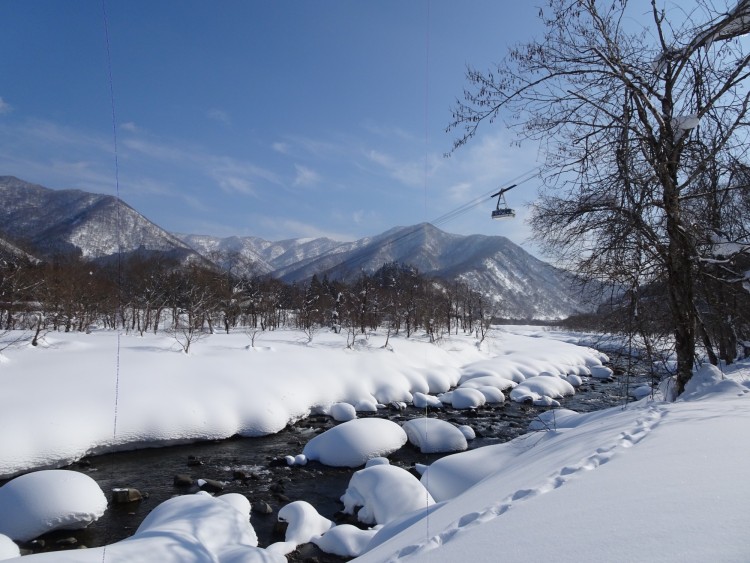
The sun shining over the Kiyotsu River made the rippling river sparkle and tree-branch icicles glisten. Photo: Greg Goodmacher
Some of the links in this article may contain affiliate links. When you purchase using these links, part of the proceeds go to Snowshoe Mag. Additionally, as an Amazon Associate, we earn from qualifying purchases. Please see our disclosure for more details.
The Kamoshika
A tremendous variety of hoof and paw prints on a riverbank layered with several yards of snow revealed an abundance of wildlife still present. The sun shining over the Kiyotsu River made the rippling river sparkle and tree-branch icicles glisten. A modern gondola rose above the tops of trees to my left. It floated above my head before disappearing behind the branches of other trees on the mountain slope to my right. Then, I glimpsed the movement of a sizable animal walking almost parallel to me behind a thicket.
After stealthily moving toward a better vantage point, I noticed an adult Japanese serow was about twenty yards from me. In the mid-20th century, the Japanese hunted these goatlike, thick-furred herbivores almost to extinction for their meat and fur. One animal weighing up to 100 pounds represented a great deal of protein to villagers who lived off the land in a harsh environment. Today, though, they are protected animals. Their population rebounded, and I discovered that the full-grown female traveled with a kid. They both scrambled through deep snow up the slope. Finally, the baby disappeared above a cornice. However, the mother stopped and stared straight into my eyes for several minutes before slowly walking away.
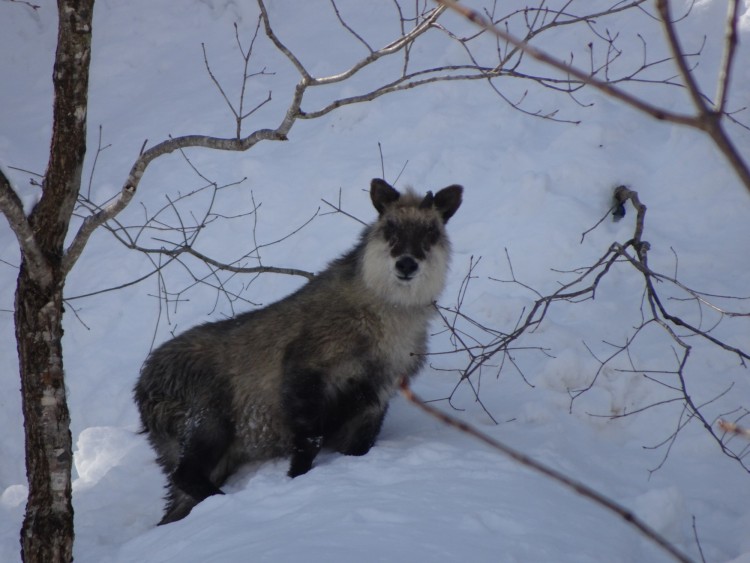
In the mid-20th century, the Japanese hunted serows almost to extinction for their meat and fur. Now, it stares straight ahead at the author. Photo: Greg Goodmacher
Snow Country and Japan’s First Nobel Prize for Literature
In 1968, Yukiguni (in English Snow Country) became the first Japanese novel to win a Nobel Prize for literature. Snow Country also means Niigata and other prefectures in northern Japan, where snow can swallow houses and, before modern snowplows, separated communities for months. Not too long ago, residents depended on handmade wooden and bamboo snowshoes, sleds, and skis for transportation.
Yasunari Kawabata’s tragic love story of Shimamura, a wealthy Tokyo dilettante, and Komako, a local geisha, written with lyrical descriptions of snow country life, spotlighted Yuzawa, Niigata. After reading his novel, I decided to see where the author and his characters spent winter.
The line of the book: “The train came out of the long tunnel into the snow country,” resonates with people in Japan. The Shimizu Tunnel, built for train use in 1931, revolutionized train travel between the Pacific Side and the colder Sea of Japan region. Niigata-bound trains from Tokyo shoot through long, dark tunnels. Suddenly, entering a land of whiteness, passengers discover a different climate, where lifestyles vastly differ from those of people living within Japan’s Pacific prefectures.
The severe environment and the delicate beauty of snow country can cause emotional reactions. My favorite line in the novel expresses how one clear night sky affected Shimamura: “As he caught his footing, his head fell back, and the Milky Way flowed down inside him with a roar.” This is how such mountain nights affect me.
Read More: Winter-spiration: Books To Inspire Winter Outdoor Adventures
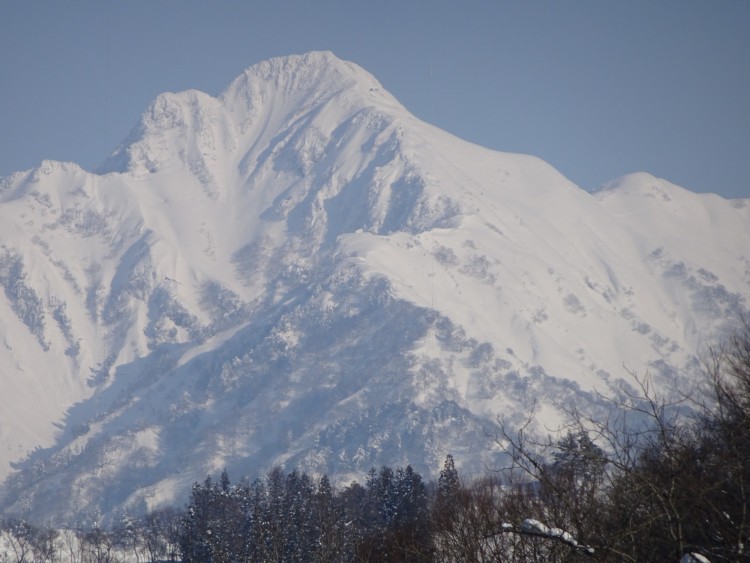
The severe environment and the delicate beauty of snow country, such as this view, can cause emotional reactions. Photo: Greg Goodmacher
Around Echigo-Yuzawa Train Station
Tiny Echigo-Yuzawa Train Station, where the protagonist arrived at the novel’s start, is now a bustling modern station. Bullet-shaped Shinkansen trains traveling at 150 mph sweep in and out daily. One thing that has not changed is voluminous snowfall. Snow country tourism draws winter enthusiasts. Yuzawa Town alone has a dozen ski grounds and countless hot springs.
Drop into the information center outside the West Exit for friendly guidance and a Snow Country Novel Walking Course map. The center also rents French-made TSL 325 snowshoes for just 1,100 yen (around 10.00 USD).
Yuzawa Town History Museum
From there, a seven-minute walk past local stores and hot springs brought me to the Yuzawa Town History Museum. Three-yard-high snow piles lay on the unplowed ground around the building.
The exhibits are primarily items made by locals for life in snow country before synthetic, mass-produced materials existed; for instance, boots weaved from rice straw, snow jackets woven from grasses, skis hewn from wood, and snowshoes made with bamboo and tree branches. A replica of the novel’s geisha’s room, an exhibition of paintings representing scenes from the book, and personal items of the author are also displayed.
Shimamura visits Yuzawa three times in the novel. Komako and Shimamura walked, hiked, and drove to various parts of Yuzawa Town. I had hoped to see shrines, bamboo fields, graveyards, and other locations where the story had brought the lovers. But, powdery snow close to the height of a one-story house covered some spots and trails.
Read More: Traditional Snowshoes: Shapes, Designs, and Names
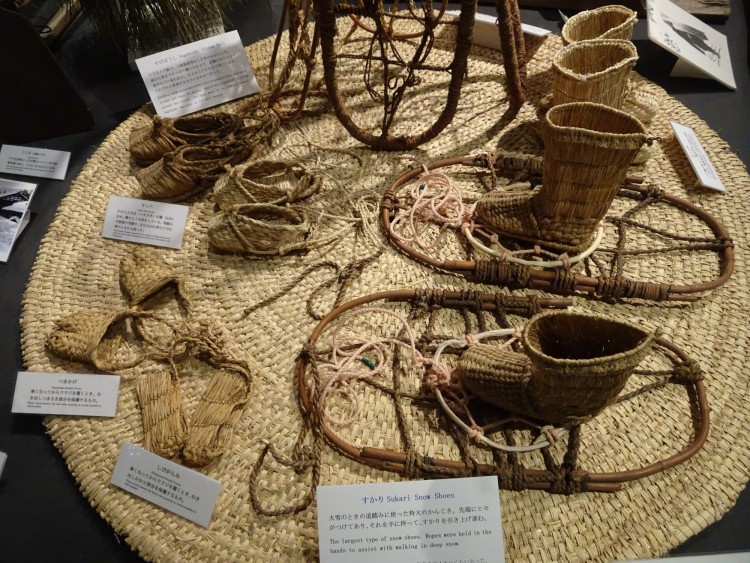
The museum included a variety of exhibits, including snowshoes made with bamboo and tree branches. Photo: Greg Goodmacher
Historic Japanese Inn
Luckily, I could visit Takahan, a 900-year-old Japanese-style hotel built around a natural hot spring. Yasunari Kawabata wrote much of his novel while staying in that Japanese inn. Many events in the story also occurred there. And numerous scenes in the movie version were filmed in and around the hotel.
The owners preserved the Kasumi-no-ma room, where the author and main character slept, ate, loved, and wrote. It is now part of the hotel’s Yasunari Kawabata Museum. After Snow Country was published, famous Japanese poets, songwriters, and visual artists holidayed at Takahan. Kasumi-no-ma and the surrounding snow country environs inspired the creation of well-known songs, poems, drawings, and paintings, and the surroundings are still inspirational.
Takahan allows public access to the museum (depending on the spread of coronavirus, this may change). The movie also plays each evening in a small theater on the premises.
Yasunari Kawabata was a prolific author who was also proud of Japanese culture. One photograph in the museum shows him wearing a traditional kimono at the Nobel Prize ceremonies. At the same time, everyone around him is garbed in a tuxedo.
Read More: Celebrating the New Year on Snowshoes in Japan
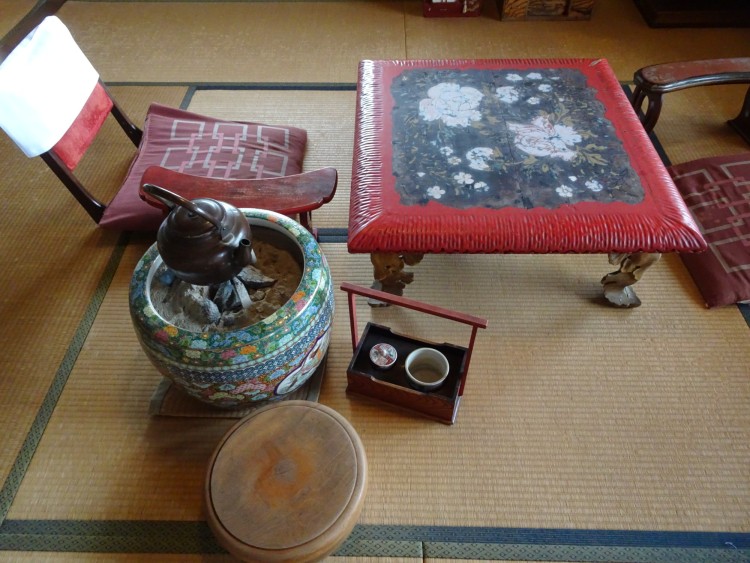
The owners preserved the Kasumi-no-ma room, where the author and main character slept, ate, loved, and wrote. Photo: Greg Goodmacher
More on Life in Snow Country
Every winter, people die after slipping off roofs while attempting snow removal. Others die after they are buried by snow falling off their homes. Niigata prefecture often leads the nation in these fatal accidents. For Yuzawa residents, removing snow from homes or around their homes is a daily chore in winter. A cubic meter can weigh between 110 and 440 pounds, depending on how packed or wet snow is at the time.
Driving on snow and ice requires practice and skill, which snow country folk develop quickly. However, some people prefer to use public transportation. Some of the bus stops in Yuzawa are wooden huts almost buried by snow.
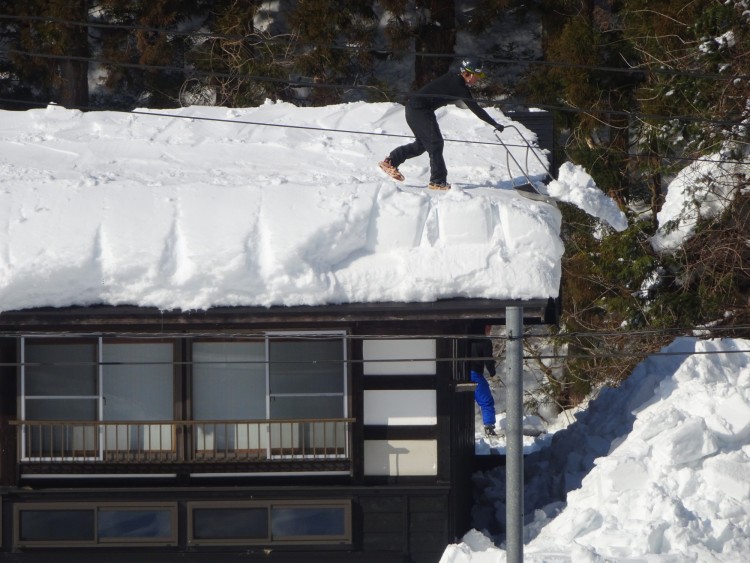
For Yuzawa residents, removing snow from homes or around their homes is a daily chore in winter. Photo: Greg Goodmacher
Finding Places to Snowshoe
Finding fun areas for snowshoeing is easy in Yuzawa. Several of the local winter resorts run tours, which are reasonably priced.
Gala Yuzawa, a large ski area near Takahan, offers the Snowshoe Walking Tour. Guests wear traditional round snowshoes called kanjiki in Japanese. These are made of bent branches and rope. The tour takes guests to mountain tops with almost endless views of valleys and snowcapped peaks.
The Sherpa International Snow School, based inside the Naeba Prince Hotel, offers snowshoe tours to quiet areas. Native speakers of various languages guide snowshoers and teach a wide range of winter sports.
Also, Snow Country Tourism offers a snowshoe tour that includes a soba-making workshop.
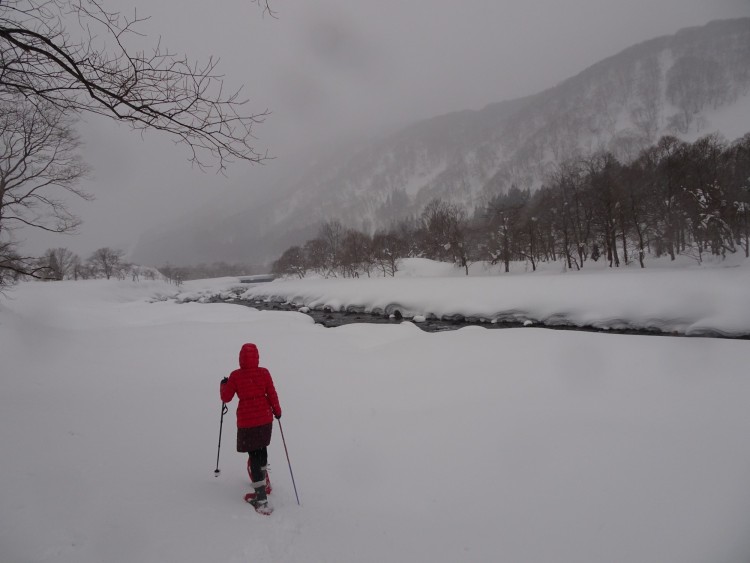
We snowshoed through nearby woods to the Kiyotsu River. It was along this river that I encountered the serow family. Photo: Greg Goodmacher
Self-Guided Snowshoe Explorations
I prefer freely snowshoe trekking with a few friends, so I usually avoid tours. Instead, I examined a map for suitable terrain for this trip and asked knowledgeable locals for advice.
The map brought me to Michi-no-Eki Mitsumata, a rest stop and information center. Snow country food products and mountaineering goods are sold in this rustic wooden building. Customers can leisurely warm up by drinking organic tea and soaking their feet in a communal thermally heated ––footbath. A clerk suggested that I snowshoe through nearby woods to the Kiyotsu River. It was along this river that I encountered the serow family.
Places to Stay
Yuzawa accommodations range from budget hotels to high-class Japanese inns with private hot springs in the rooms or on balconies.
Since I was traveling during a spike in COVID-19 cases, I chose a cottage at Naeba West. My wife and I prepared and ate meals in privacy on the edge of a mountain in the Naeba area of Yuzawa. We loved soaking in hot spring baths in the hotel building. The outdoor baths were comfortably hot even though surrounded by deep snow and icicles hung from the rafters.
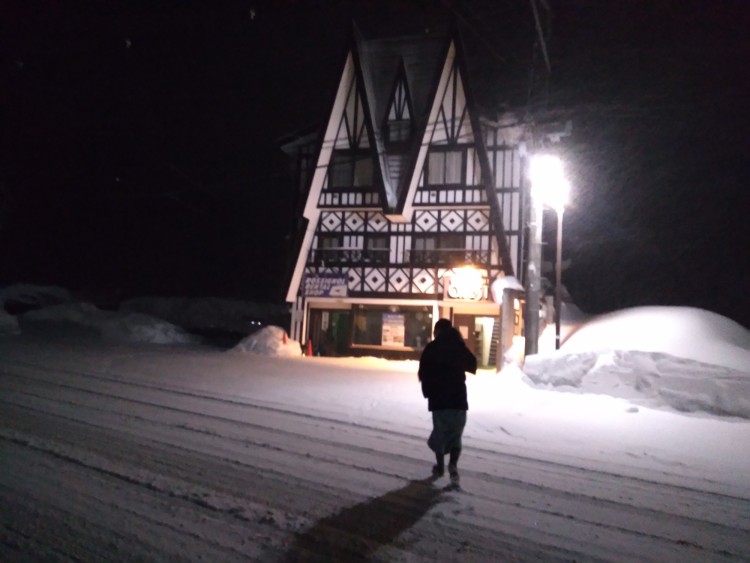
This cottage at Naeba West provided hot spring baths and privacy on the mountain’s edge. Photo: Greg Goodmacher
Getting to Echigo-Yuzawa Station and Moving about Town
The Joetsu Shinkansen line smoothly and speedily glides passengers along the 125-mile route from Tokyo to Echigo-Yuzawa Station, covering the 125 miles in 70 to 100 minutes depending on the departure time. Driving is possible, but only drivers experienced in snow conditions should attempt it. Snow tires are mandatory.
Hotels, restaurants, and hot springs are close to the station and spread out through the mountainous Yuzawa area. A car is not necessary if you stay near the station and use local bus services. In addition, local ski resorts and the town offer free shuttle buses.
Have you read Yukiguni or experienced Japan’s Snow Country? Would you? Please share your thoughts and recommendations in the comments below.
Read Next: Snowshoe Education and Adventure in Matsudai, Niigata

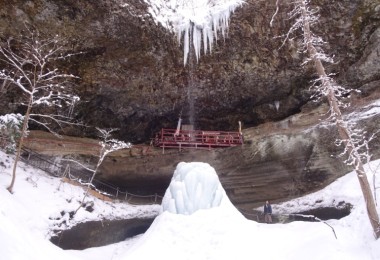
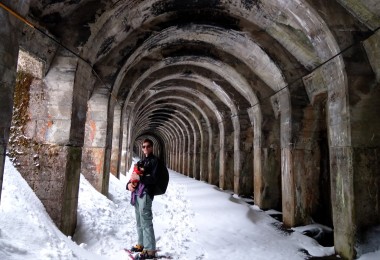
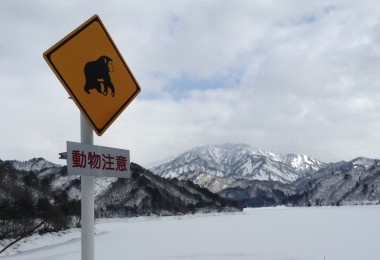
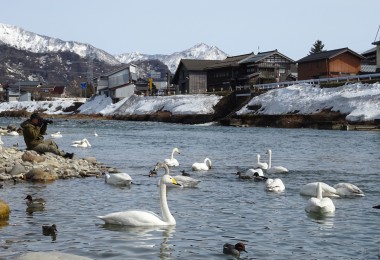

I read the article about snow country. I would like to visit Yuzawa someday! Yuzawa is exactly suitable place for Yukiguni.
Hello Myu, Thank you for your comment. I hope that you will visit Yuzawa in the near future.